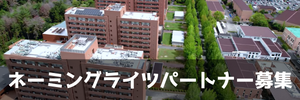(English announcement can be found in the latter half of this notice.)
広島大学バイオマスプロジェクト研究センターと中国地域バイオマス利用研究会の共催で広島大学バイオマスイブニングセミナーを開催しています。バイオマスに関する基本的な考え方から最先端の情報までをカバーして、この地域におけるバイオマスの活動に資することを目的とするものです。第51回を以下の日程で開催しますので、ご参集下さい。
日時 2017年3月1日(水)16:20~17:50
会場 広島大学東広島キャンパス工学部104講義室
http://hiroshima-u.jp/eng/access/lectureroom
http://hiroshima-u.jp/eng/access/building
http://hiroshima-u.jp/access/
プログラム
解説 広島大学大学院工学研究院 教授 松村 幸彦
講演 広島大学大学院工学研究科 M2 廣田 綜一
「水熱処理におけるアデノシン三リン酸の反応特性」
下水汚泥中に存在する有機リンのモデル物質としてアデノシン三リン酸(ATP)を用い、流通式反応器にて、その水熱ガス化特性の確認を行いました。反応温度400℃、滞留時間40sにおいて40%以上のガス化率を示し、ガス化速度は4.49×10-2/sでした。生成されたガスのほとんどは一酸化炭素であり、わずかに水素も検出されました。リン酸イオンは、温度の上昇、滞留時間の増加に伴って減少し、ATPの無機化が確認されました。
講演 広島大学工学部 B4 橋本 壮侍
「水熱処理におけるDNAの挙動」
リンは植物を育てる際の肥料ですが,その形態は無機リンです。近年,下水汚泥から無機リンを回収する研究が行われており,水熱処理はその方法の一つとして提案されています。本研究では下水汚泥に含まれているとされる有機リンの一つであるDNAを試料として用い,その挙動を確認しました。350℃から450℃までで温度を変化させて実験を行ったところ,反応温度が上昇するとともに,無機リンの収率は減少しました。
講演 広島大学大学院工学研究科 M1 五藤 聡
「麦焼酎残渣の超臨界水ガス化における酢酸のチャー生成抑制」
本研究の目的は麦焼酎残渣の超臨界水ガス化における酢酸の添加効果を確認することです。既往の研究ではカルボン酸の存在がチャー・タールの生成が抑制されることが報告されていますが、酢酸の濃度変化の影響はまだ明らかになっていません。580-620℃、25MPa、滞留時間97sで麦焼酎残渣の超臨界水ガス化が行われました。麦焼酎残渣の濃度は0.5wt%で酢酸の濃度は0-0.2wt%と変化させてラジカル捕捉剤として添加されました。酢酸0.01wt%を添加させた際に固体生成量が最も小さくなり、ガス組成にも酢酸の濃度変化の影響を確認しました。
講演 広島大学大学院工学研究科 D3 Duangkaew PATTASUDA
「水熱条件下におけるグルコース分解のその場質量分析と開発」
水熱条件下におけるグルコースの分解特性を解明するために、まず、グルコースを140−220℃で2.5−20min水熱処理し、得られた液体生成物を質量分析と高速液体クロマトグラフィー(HPLC)によって分析しました。その場分析の結果から、高温ほどグルコースは高い分解率を示すことが確認されました。また、5-ヒドロキシメチルフルフラールならびに他の低分子量の酸が存在し、その濃度が 180℃またはより高温で増加することも確認されました。HPLCまたは質量分析の結果から、グルコースの反応経路を提出し、1次反応を仮定して各反応の反応速度定数を決定しました。
司会 広島大学大学院工学研究院 特任助教 Obie FAROBIE
なお、18:00より意見交換会(参加費 800円)を開催します。ご都合の付く方はこちらにもご参加下さい。
The 51th Hiroshima University Biomass Evening Seminar
(The 8th Hiroshima University ACE Seminar)
Biomass Project Research Center, Hiroshima University, and HOSTY Association are co-organizing the Hiroshima University Biomass Evening Seminar. This seminar covers topics from the fundamentals of biomass to the latest information so that it can contribute the activities on biomass in this district. The 50th seminar will be held as follows. Please join.
Date & Time: Wed.1 Mar., 2017 16:20-17:50
Place: Engineering 104 Lecture Room, Higashi-Hiroshima Campus, Hiroshima University
http://hiroshima-u.jp/eng/access/lectureroom
http://hiroshima-u.jp/eng/access/building
http://hiroshima-u.jp/access/
<Program>
Commentary: Yukihiko MATSUMURA
Professor, Institute of Engineering, Hiroshima University
Lecture: Soichi HIROTA
M2 Student, Graduate School of Engineering, Hiroshima University
“Reaction characteristics of adenosine triphosphate in hydrothermal treatment”
Hydrothermal treatment of adenosine triphosphate (ATP) as a model compound of organic phosphorus in sewage sludge was operated. It was treated under hydrothermal condition of 25 MPa. As a result, over 40 % of carbon gasification efficiency could be confirmed after 40 s of hydrothermal treatment at 400 ℃, and the gasification rate constant was 4.49×10-2/s. The main component of produced gas was carbon monoxide, and hydrogen of small amount was also confirmed. Also, the mineralization phosphorus was confirmed by analyzing the content of phosphate ion after hydrothermal treatment.
Lecture: Soshi HASHIMOTO
B4 Student, School of Engineering, Hiroshima University
“Behavior of Deoxyribonucleic Acid in Hydrothermal Treatment”
Phosphorus is used for fertilizer to grow plants and its form is inorganic phosphorus. Recently, phosphorus recovery from sewage sludge have been researched. Hydrothermal treatment is proposed as one of the method. In this study, DNA is one of the organic phosphorus contained in sewage sludge and we determined the behavior. At this time, the experiment was conducted by changing the temperature from 350 ℃ to 450 ℃. Inorganic phosphorus yield decreased with the increase of reaction temperature.
Lecture: Satoshi GOTO
M1 Student, Graduate School of Engineering, Hiroshima University
“Char Suppression of Acetic Acid on Supercritical Water Gasification of Shochu Residue”
The main objective of this research is to study the effect of acetic acid on gasification of shochu residue. It was reported in previous study that yield of char or tarry material decreased in the presence of carboxylic acid. However, the effect of acetic acid concentration is still unclear. In this study, supercritical water gasification (SCWG) of shochu residue were conducted in a temperature range of 580-620 ℃, 25 MPa and residence time of 97 s. The concentration of shochu residue was 0.5 wt% and acetic acid was used as radical scavenger whose initial concentration varied from 0 to 0.2 wt%. Experimental conditions were shown in Table 1. The liquid product was analyzed using total organic carbon (TOC) analyzer while gas product was analyzed using gas chromatography (GC). Solid production was evaluated by comparing filter weight before and after the experiment. When concentration of acetic acid was 0.01wt%, solid production was the lowest. Larger amount of acetic acid made solid yield increase. Gas composition was also affected by acetic acid concentration.
Lecture: Duangkaew PATTASUDA
D3 Student, Graduate School of Engineering, Hiroshima University
“In-situ Quantitative Mass Spectrometry of Decomposition Products and Development for Hydrothermal Treatment of Glucose”
In this research, hydrothermal treatment of glucose was conducted at temperatures ranged from 140 ℃ to 220 ℃, with reaction times between 2.5 min and 20 min. Liquid products obtained after the hydrothermal process were quantitatively analyzed by the mass spectroscopic method and high performance liquid chromatography (HPLC) analyzer. The in situ MS analysis revealed that decomposition rate of glucose was enhanced at the higher temperature. The results showed that the presence of 5-hydroxymethylfurfural (5-HMF) and other low-molecular-weight acids, whose concentration increased when the temperature increased to 180 and 220 ℃. The reaction pathway of glucose decomposition was purposed follow products obtained by in situ MS analysis and HPLC and the kinetic parameters for the pathway of glucose under hydrothermal conditions have been achieved by assuming first-order reactions.
Chair: Obie FAROBIE
Specially Appointed Assistant Professor, Institute of Engineering, Hiroshima University
We will hold the discussion meeting from 18:00 (800 JPY needed). Join this meeting, too if you are available.


 Home
Home









